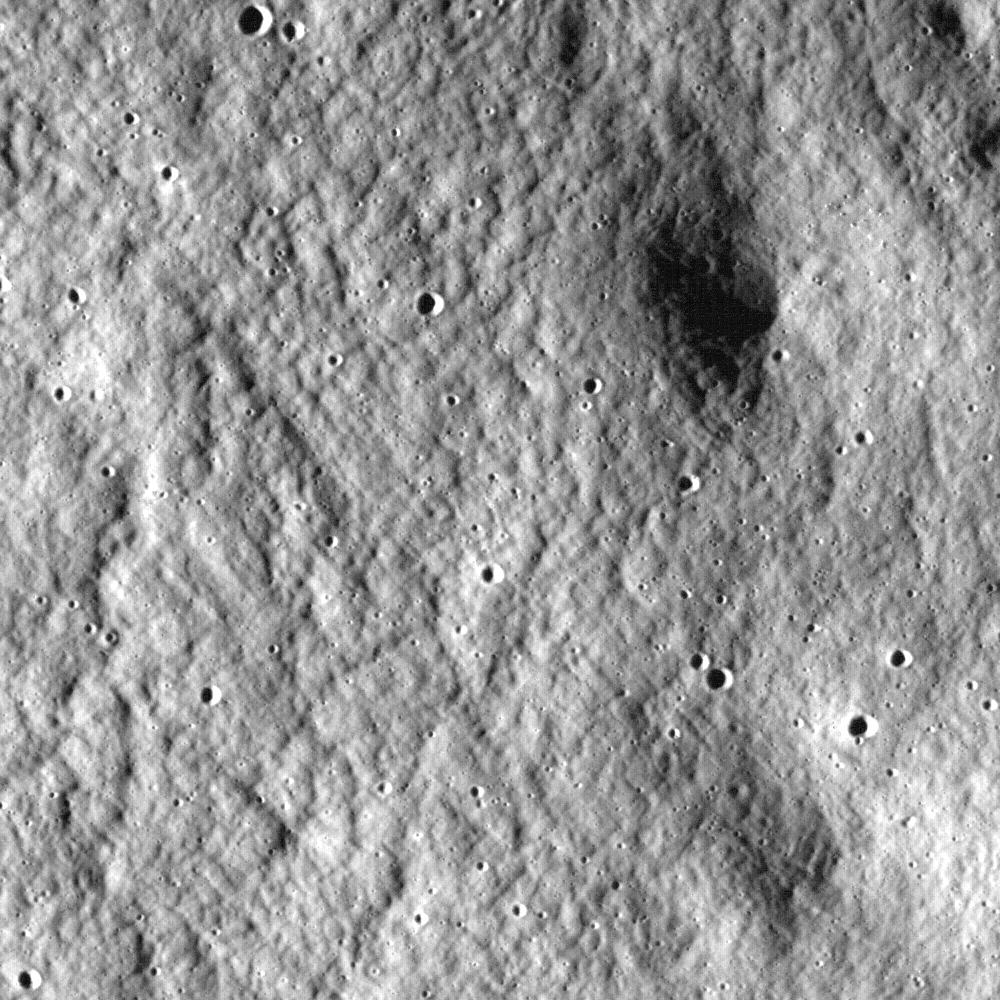
Tuesday's LROC images were purely engineering tests, and this particular frame was part of a sequence specifically designed to check one of the NAC's settings. The engineering frames were acquired with only one-tenth the number of lines of a standard 52,224-line NAC frame to allow the full sequence to be acquired in one orbit. As an added bonus we captured this spectacular view of the lunar highlands northeast of Clavius crater. From 56 km altitude, small features such as fresh craters and boulders can be readily identified. Many hills in the highlands exhibit the so-called "tree bark" or "elephant skin" texture, which really stands out in this picture. "Tree bark" was first identified by lunar scientists analyzing Apollo-era photography during the 1970s, and its origin remains a mystery. As NAC images accumulate and more examples are revealed, scientists will delve into the processes that form this distinctive surface texture. You can browse the full-resolution version of this image below.
Published by Samuel Lawrence on 3 July 2009